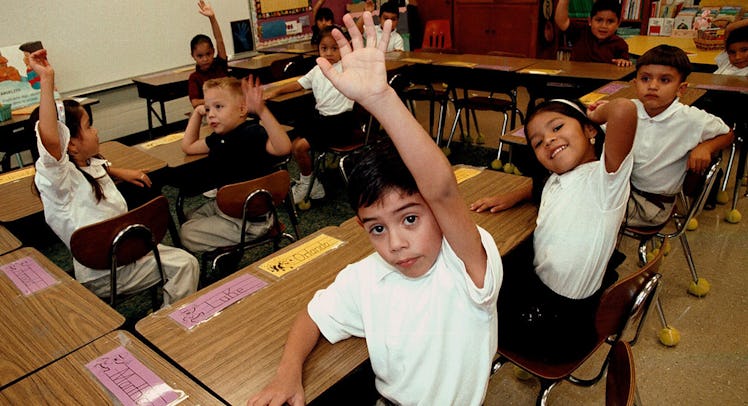How Much Time Do Kids Around The World Spend At School?
A quick look at how six countries around the world handle everything from classroom instruction to homework to those seemingly endless teacher-planning days.

We tend to think of school days as being somewhat standardized. It’s comforting to think that the experience of spelling tests, story time, recess, and bad cafeteria food is universal. The assumption is that whether a kid is in private or public school, in the U.S. or Japan or France, the number of hours in a school day and school days in a year are essentially the same. In reality, the number of days kids go to school, their length, and the way school days are broken up varies drastically by country. It turns out, the length of the school day and the number of annual school days that we’re accustomed to are peculiarly American, rising out of practical and cultural traditions so familiar they’re hard to trace.
School days elsewhere in the world are in fact radically different from our own. Each country has its own specific rituals and educational norms, and beneath those lie foundational assumptions about the value and purpose of education, parental involvement, the balance of responsibilities in a child’s life, and childhood itself. Only by looking at what school days look like in other countries can we get perspective on how our kids’ school days stack up. Here’s a quick look at how six countries around the world handle everything from classroom instruction to lunchtime to homework and the number of school days per year.
France: Wednesday Isn’t Just Hump Day
The French are a sophisticated bunch. Fine cheeses and 19th-century art movements are all well and good, but a school day off in the middle of the week is their best contribution to society since mayonnaise. For years, the French have kept Wednesdays semi-sacred — older kids get Wednesdays off, but may have a half or full school day on Saturdays. Even with the midweek break, French students are still in class for eight hours every other weekday. But rest assured their school days include a 90-minute lunch break, because the French are very French when it comes to their cafeteria food.
Chile: Greatest Amount of Class Time
Chile has the highest average amount of school days worldwide for primary school students. These Chileans spend 1,007 hours a year behind a desk. Chile is at the top of Latin American countries in reading and math, so there is a payoff to all that instructional time. The country is also looking to make university education free across the nation, so there might be a method to their madness.
Japan: Minimum Homework, Maximum Results
You’d think with what you’ve heard about the rigors of Japanese schools, they would have the most homework. Untrue. Japanese kids average just 3.8 hours a week, but still manage to be on the higher end of worldwide math scores. The reason for the limited homework isn’t because they have it easy; it’s because most kids have school after the school day ends, also known as “gakudo.” These school programs serve more as a daycare for kids, but since they’re at school, there’s still learning to be done.
Finland: What Homework?
The country with the most heavy metal bands per capita is also home to one of the world’s best school systems. Finland not only has some of the world’s brightest children, but some of the luckiest. On average, Finnish kids receive no more than three hours of homework a week. Plus there are no exams and no grades. How are their parents supposed to be quantifiably disappointed in them?
Singapore: The Smartest Kids on Earth
In order to be at the top, you have to put in the work. Singapore ranks high both in the world’s smartest kids category and most hours spent on homework (nearly 9.5 hours a week). The country has spent the past 40 years transforming its economy from a blue-collar-based job market to a tech-based, white-collar one. It all started with changing their education system, which they overhauled in the past decade.
Costa Rica: More Money, More Literacy
Everyone loves Costa Rica. You can zipline and can surf in two oceans. It scores high on the happiness index, not to mention it’s winning at literacy, because 98% of people age 15 to 24 can read. But it’s not without investment. The country spends a whopping 8% of their GDP on education. (The United States spends about 6.4%, for comparison). Since Costa Rica has no formal military, they can devote that cash to young minds.
This article was originally published on